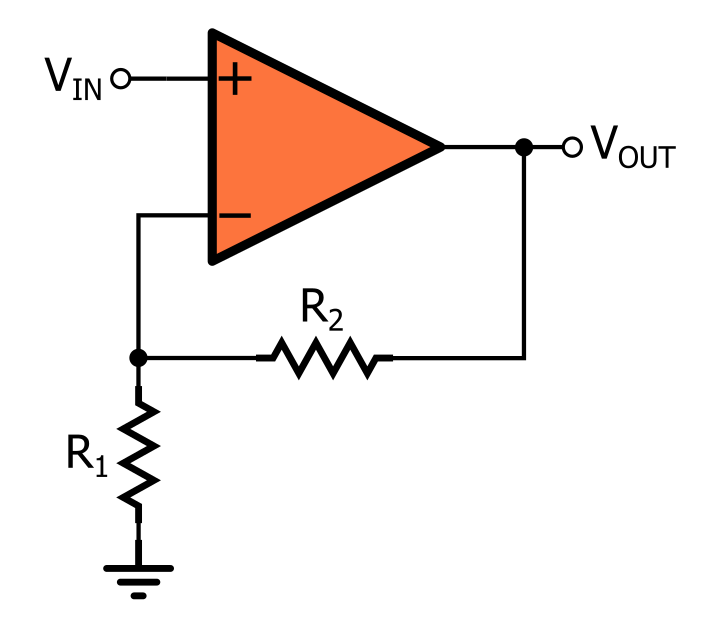
Non inverting op amp circuit
A non-inverting amplifier is an op-amp circuit configuration that produces an amplified output signal and this output signal of the non-inverting op-amp is in-phase with the applied input signal. In other words, a non-inverting amplifier behaves like a voltage follower circuit.

NonInverting Operational Amplifier (Opamp) Ideal In English YouTube
Non-inverting op-amp Google Classroom About Transcript An op-amp can be used to amplify a voltage. The gain is determined by the ratio of two resistors. Created by Willy McAllister. Questions Tips & Thanks Sort by: Top Voted Atharva 7 years ago It the current is zero, what is the point of the circuit?

PPT Lecture 1 OpAmp PowerPoint Presentation, free download ID3208987
Non-inverting operation is achieved by connecting the input signal to the op-amp's non-inverting input terminal. The gain is determined almost completely by the two resistors, which form a feedback network connected between the op-amp's output and its negative input terminal.
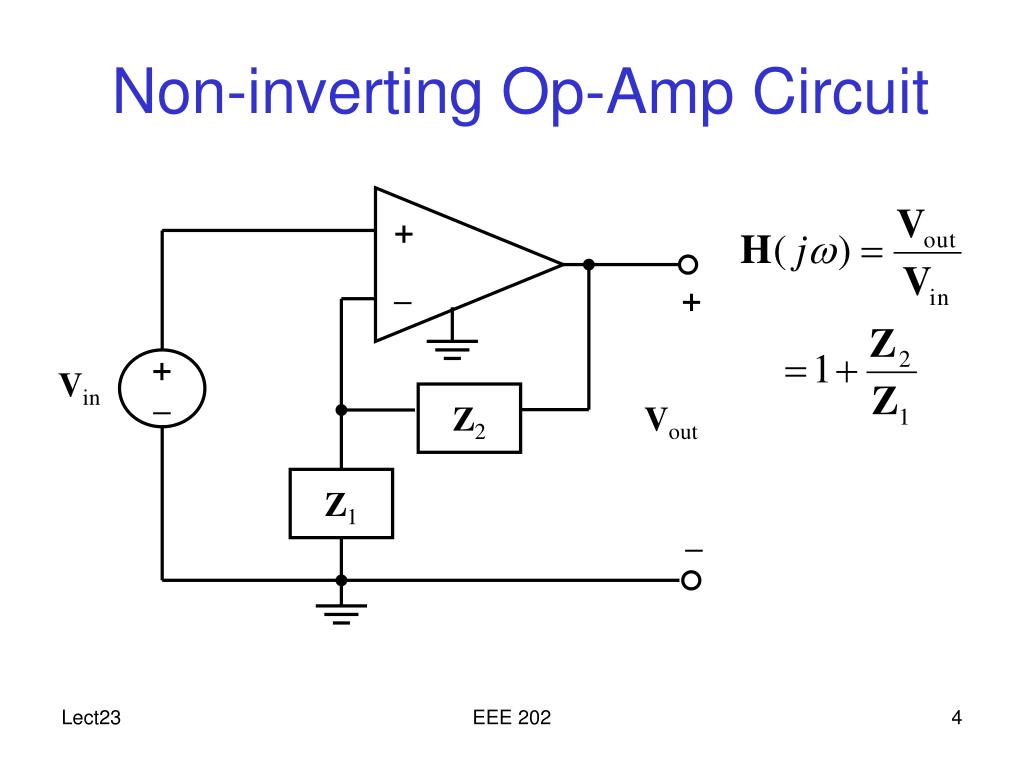
Non Inverting Op Amp Vout Riset
Non-inverting op-amp definition is, when the output of an operational amplifier is in phase with an input signal then it is known as a non-inverting op-amp. In this amplifier, the input signal is applied to the +ve terminal of an operational amplifier.

Operational Amplifiers NonInverting Configuration YouTube
August 8, 2021 by Electrical4U. Non-inverting amplifier is an op-amp-based amplifier with positive voltage gain. A non-inverting operational amplifier or non-inverting op-amp uses an op-amp as the main element. The op amp has two input terminals (pins). One is inverting denoted with a minus sign (-), and other is non-inverting denoted with a.
Operational Amplifier NonInverting OpAmp and OpAmp as Buffer ALL
Non-inverting Operational Amplifier Op-Amp, short for operational amplifier is the backbone of Analog electronics. An operational amplifier is a DC-coupled electronic component which amplifies Voltage from a differential input using resistor feedback.
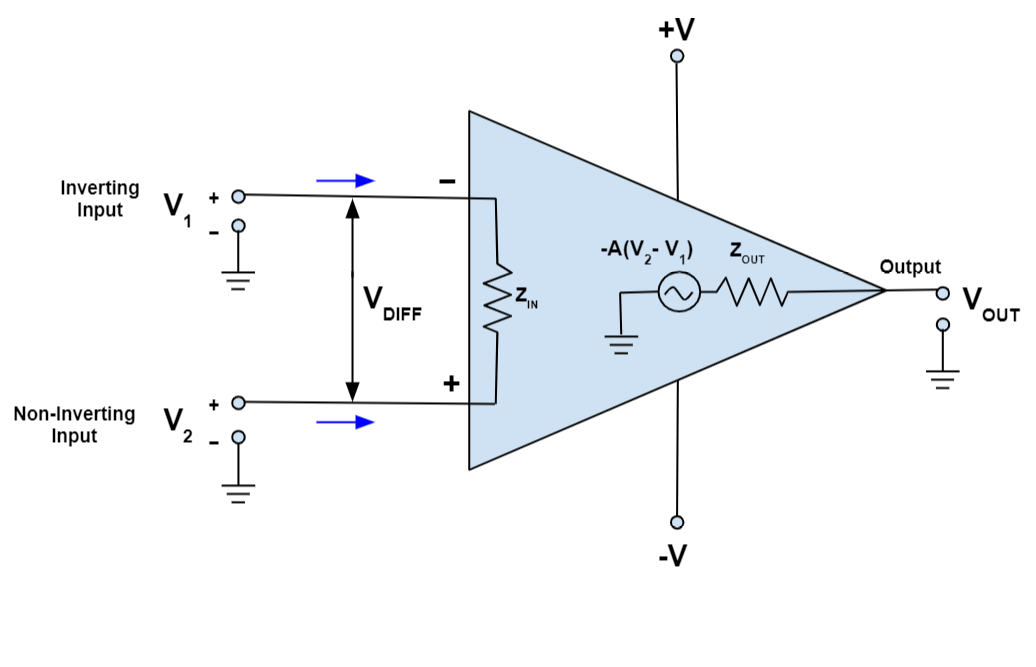
Non inverting op amp offset output naachef
A non-inverting operational amplifier (op-amp) amplifies the input signal without inverting its polarity. This tool is designed to compute for the resistors R2, R3 and R4 used in a non-inverting amplifier. The resulting values are in kilo-ohms (kΩ).

Non Inverting Amplifier(OPAMPs) » OPAMP tutorial
There are few non inverting op amp types which are explained as below: Single Supply Non Inverting Op Amp. In general, operational amplifiers are constructed with two power supplies which can be +10V and -10V. In making the design easy, a single supply op amp is used where the single supply configuration can be achieved by half supply railing.
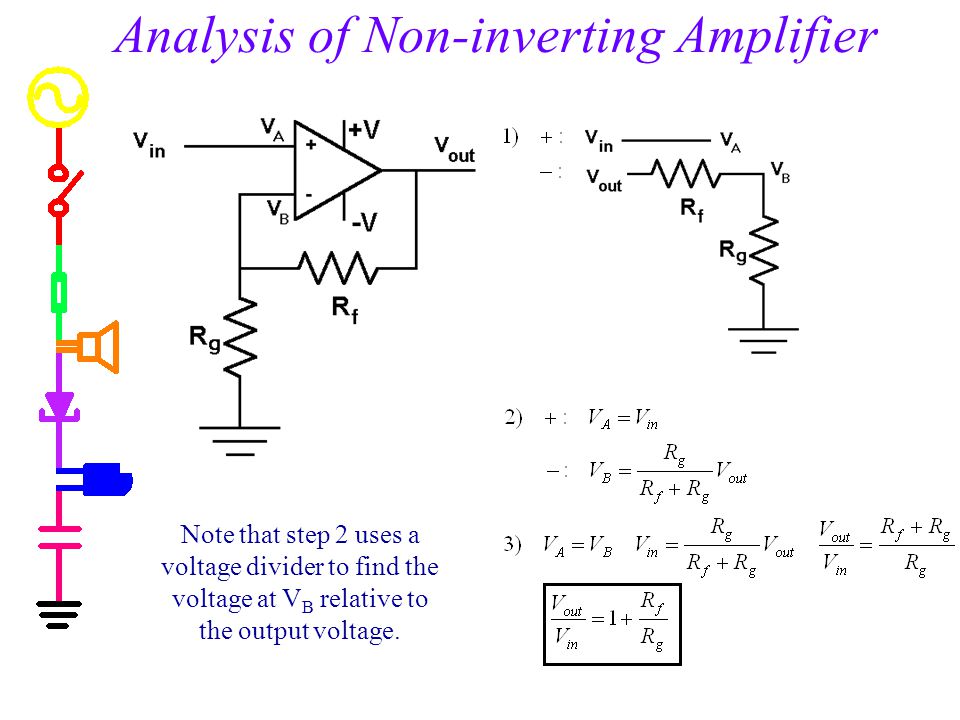
Non Inverting Closed Loop Amplifier Shoaib Wahgra
A non-inverting op-amp has an extremely high input impedance, which makes it very difficult for any current to enter the device. The output impedance of the op-amp is also very low, making it a useful buffer between circuits that have different impedances or voltages. A non-inverting op-amp is used in many applications such as amplifiers.
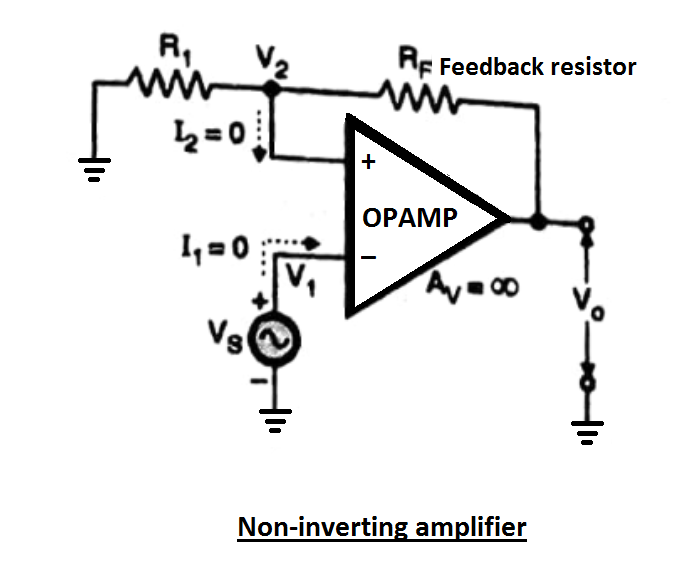
02 Non Inverting Op Amp Amplifier Problems Part 1 Youtube Gambaran
So the gain factor is 11. This is because the formula for non-inverting gain is: Since we're using a 10KΩ resistor and a 1KΩ resistor, this gives a gain of 1+ 10KΩ/1KΩ= 11. If you want to adjust the gain, then you can just swap out resistors. To test this circuit out, place a sine wave signal at the non-inverting terminal of the op amp.

What is NonInverting Op Amp Equation Wira Electrical
If the non-inverting input is at a higher voltage than the inverting input, then the output will go high. If the inverting input is higher than the non-inverting input, then the output will go low (which can be negative, depending on the configuration of the op-amp).

operational amplifier What is the advantage of the inverting opamp
An inverting amplifier using op-amp is a type of amplifier using op-amp where the output waveform will be phase opposite to the input waveform. The input waveform will be amplifier by the factor Av (voltage gain of the amplifier) in magnitude and its phase will be inverted. In the inverting amplifier circuit the signal to be amplified is.

non inverting op amp Sally Paterson
The noninverting voltage amplifier is based on SP negative feedback. An example is given in Figure 4.2.1. Note the similarity to the generic SP circuits of Chapter Three. Recalling the basic action of SP negative feedback, we expect a very high Zin, a very low Zout, and a reduction in voltage gain.

Noninverting Amplifier using OPAMP YouTube
In non-inverting operational amplifier configuration, the input voltage signal, ( VIN ) is applied directly to the non-inverting ( + ) input terminal which means that the output gain of the amplifier becomes "Positive" in value in contrast to the "Inverting Amplifier" circuit we saw in the last tutorial whose output gain is negative in value.

NonInverting Amplifier HyperElectronic
Non-Inverting Operational Amplifier When the signal is applied at the non-inverting input, the resulting circuit is known as Non-Inverting Op-Amp. In this amplifier the output is exactly in phase with the input i.e. when a positive voltage is applied to the circuit, the output will also be positive.

NonInverting Amplifiers Developer Help
Real non-inverting op-amp. In a real op-amp circuit, the input (Z in) and output (Z out) impedances are not idealized to be equal to respectively +∞ and 0 Ω. Instead, the input impedance has a high but finite value, the output impedance has a low but non-zero value. The non-inverting configuration still remains the same as the one presented.